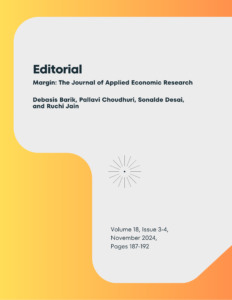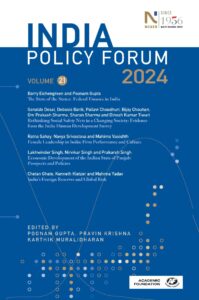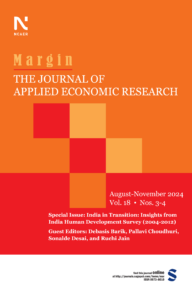
For India, agricultural protection is similar to US anxiety on immigration.
Once, I took a group of American students to learn more about the rural parts of India. We spent a couple of weeks in a village, where the students were constantly trailed by giggling children, several of them shouting out questions. So, we decided to hold an assembly at a school where the children could learn about America, with me translating. One of the questions was about the difference between villages in India and those in the US.

Sonalde Desai speaks to us about how the dipping fertility rate is going to impact India’s population, how variations in State fertility rates, primarily between the north and south are going to play out and the future of an ageing India

The early decades of the 21st century reflect tremendous transformation in Indian society due to both economic growth and global challenges. The Gross Domestic Product has grown at the rate of 5–9 per cent resulting in a decline in poverty. Whereas, the India Human Development Survey (IHDS) recorded a sharp fall in the poverty rate from 38.6 per cent in 2004–2005 to 8.5 per cent in 2022–2024 (Desai et al., 2024). Data from the National Sample Survey’s Household Consumption Expenditure Surveys (Government of India, 2024) suggest an even lower poverty rate.

With a growing economy and declining poverty, India faces a curious challenge in providing a social safety net to its citizens. Using data from three rounds of the India Human Development Survey (IHDS), collected in 2004-05, 2011-12, and 2022- 24, this paper shows that households face considerable transition in and out of poverty as the economy grows. Historically, India’s approach to social safety nets has involved identifying the poor and providing them with priority access to various social protection programs that include both in-kind and cash assistance—however, the nature of poverty changes with economic growth. This churn in households’ economic circumstances makes it difficult to identify and target the poor precisely.
Using unique, newly collected, panel data, this paper makes three observations about India’s anti-poverty programs: (1) Identification of households as poor (now dubbed priority households) relies on identification exercises carried out every 10-15 years and assumes that poverty status is relatively static. However, results presented in this paper document a substantial transition in and out of poverty. (2) This ex-ante identification of needy households leads to relatively weak correlation between households’ actual economic status and access to social safety nets. This should not be assumed to be an example of elite capture but rather an artefact of a static program design. (3) Recognition of exclusion and inclusion errors led to an advocacy for a vast expansion of the population eligible for benefits. It was assumed that this expansion will reduce exclusion of the poorest, even if it leads to greater inclusion of the non-poor. However, experience of the National Food Security Act 2013, documented in this paper, shows that even as the proportion of households owning a Below the Poverty Line (BPL) card grew from 41 percent to 60 percent between 2011-12 and 2022-23, 30 percent of the poor were left out. This suggests that addressing inclusion and exclusion errors may be difficult, particularly in an era of economic growth. Social safety nets may need to be redesigned in a way that is responsive to changing economic conditions and unexpected events, both at the individual and the community levels.










